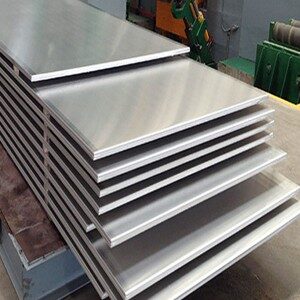 440A B C Cold Rolled Stainless Steel Strip and Sheet
440A B C Cold Rolled Stainless Steel Strip and Sheet
Introduce
Type 440 Stainless Steel, as known as razor blade steel, is a hardenable high-carbon chromium steel. When put under heat treatment it attains the highest hardness levels of any grade of stainless steel. Type 440 Stainless Steel, which comes in four different grades, 440A, 440B, 440C, 440F, offers good corrosion resistance along with abrasion resistance. All grades can be easily machined in their annealed state, they also offer resistance to mild acids, alkalis, foods, fresh water, and air. Type 440 can be hardened to Rockwell 58 harness. Each grade of Type 440 Stainless Steel is made up of a unique chemical composition. It should be noted that the only major difference between the grades is the level of Carbon
SUS440 stainless steel commonly used models have three kinds: SUS440A, SUS440B, SUS440C, and SUS440F (easy to process type).SUS440 belongs to high-strength cutting tool steel, which is martensitic stainless steel. Due to high carbon content, it is 0.95-1.2%, and the Cr content is 16-18%. It is fully hardenable and the hardness can reach HRC58.The quenching temperature is 1010-1070 and the oil is cold.Temper 100-180 rapid cooling.High yield strength can be obtained after proper heat treatment, and the hardness can reach 58HRC, belonging to the most rigid stainless steel.
440A stainless steel has excellent quenching and hardening properties, high hardness, and higher toughness than 440B and 440C. Used as cutting tool, measuring tool, bearing.
440B stainless steel has higher hardness and toughness than 440A steel.440B stainless steel for cutting tools, measuring tools and bearings, valves.Suitable for bayonet blade material.
440C has high hardness after quenching.It is mainly used for manufacturing bearing parts working in corrosive environment and non-lubricated strong oxidizing atmosphere.440C has good temperature properties and can also be used as corrosion-resistant high-temperature bearing steel.Good corrosion resistance (magnetic) tableware (knife), turbine blade hardened, higher hardness than 440A steel (magnetic), can be used to produce high-quality blade, pipe mouth, valve, plate ruler, tableware, knives, such as medical scalpel, scissors, nozzle, bearing, etc.
[divider_top]
Application
Thanks to each grades outstanding properties, all grades of Type 440 Stainless Steel can be found in a number of different products including:
Pivot pins
Dental and surgical instruments
High quality knife blades
Valve seats
Nozzles
Oil pumps
Rolling element bearings
[divider_top]
Chemical Composition
| Grade | C Max% | Si Max% | Mn Max% | P Max% | S Max% | Cr% | Mo% |
| 440A | 0.60-0.75 | 1 | 1 | 0.04 | 0.03 | 16-18 | 0.075 |
| 440B | 0.085-0.95 | 1 | 1 | 0.035 | 0.03 | 16-18 | 0.075 |
| 440C | 1.1 | 1 | 1 | 0.035 | 0.03 | 16-18 | 0.075 |
| 440F | 0.95-1.2 | 1 | 1.25 | 0.06 | 0.15 | 16-18 | 0.075 |
[divider_top]
Mechanical Properties of 440C
| Tempering Temperature (°C) | Tensile Strength (MPa) | Yield Strength 0.2% Proof (MPa) | Elongation (% in 50mm) | Hardness Rockwell (HR C) | Impact Charpy V (J) |
| Annealed* | 758 | 448 | 14 | 269HB max | - |
| 204 | 2030 | 1900 | 4 | 59 | 9 |
| 260 | 1960 | 1830 | 4 | 57 | 9 |
| 316 | 1860 | 1740 | 4 | 56 | 9 |
| 371 | 1790 | 1660 | 4 | 56 | 9 |
[divider_top]
Corrosion Resistance
Grade 440 stainless steels exhibit excellent resistance to mild acids, alkalis, foods, fresh water and air. A smooth polished surface also helps grade 440 steels resist corrosion in tempered, passivated and hardened conditions.
[divider_top]
Heat Resistance
Grade 440 stainless steels should not be used at temperatures below the relevant tempering temperature, due to loss of mechanical properties caused by over-tempering.
[divider_top]
Heat Treatment
Annealing — Grade 440 stainless steels are full annealed at 850 to 900°C, followed by slow furnace-cooling at about 600°C and air-cooling. Sub-critical annealing is carried out at 735 to 785°C, followed by slow furnace-cooling.
Hardening — Grade 440 stainless steels are heated at 1010 to 1065°C, then quenched in air or oil. Oil quenching is usually carried out for heavy sections. Following this process, these steels are tempered at temperatures from 150 to 370°C, to achieve a high hardness and improved mechanical properties.
Tempering at temperatures between 425 and 565°C should be avoided as the corrosion and impact resistance properties of grade 440 tend to reduce in this range. Also, tempering of these grades at 590 to 675°C will result in high impact resistance and loss of hardness.
[divider_top]
评论
发表评论